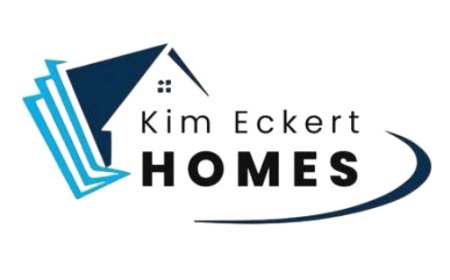how to file income tax return
Learn how to file income tax return efficiently with our 2025 guide. Step-by-step instructions, tips, FAQs, and examples for accurate tax filing and maximum refunds.

Filing yourincome tax returnis a crucial annual responsibility for most Americans, ensuring compliance with federal laws while potentially unlocking refunds, credits, and deductions. In 2025, with the tax filing season kicking off in late January and the standard deadline set for April 15, understandinghow to file income tax returnefficiently can save time, reduce stress, and avoid costly penalties. Whether you're a first-time filer, a freelancer navigating self-employment taxes, or a family claiming dependents, this guide provides a comprehensive roadmap.
Why is it important? Failing tofile income tax returnon time can lead to fines from the IRS, missed refunds (over $1 billion in unclaimed refunds annually), or audits. Conversely, proper filing maximizes benefits like the Earned Income Tax Credit (EITC) or Child Tax Credit. By following this guide, you'll learn step-by-step instructions, essential tools, expert tips, common pitfalls, FAQs, and real-world examples to make the process seamless and effective.
Comprehensive How-To Steps
Masteringhow to file income tax returninvolves preparation, execution, and review. Below is a detailed, step-by-step guide based on IRS recommendations for the 2025 tax season, covering the 2024 tax year.
Step 1: Determine If You Need to File
Before diving in, check your filing requirement. The IRS mandates filing if your gross income exceeds certain thresholds. For 2024 taxes (filed in 2025), single filers under 65 need to file if income is at least $14,600; for married filing jointly, it's $29,200. Self-employed individuals must file if net earnings are $400 or more. Use the IRS Interactive Tax Assistant tool to confirm. Even if not required, file to claim refunds or credits.
Step 2: Gather Your Documents
Organization is key to accuratetax filing. Collect all necessary paperwork early to avoid last-minute scrambles. Essential documents include:
- Personal information: Social Security Number (SSN) or Individual Taxpayer Identification Number (ITIN) for you, your spouse, and dependents.
- Income forms: W-2 from employers, 1099-NEC for freelance work, 1099-INT for interest, 1099-DIV for dividends, and 1099-G for unemployment.
- Deduction and credit records: Mortgage interest (1098), student loan interest (1098-E), medical expenses, charitable donations, and childcare costs.
- Prior year's return: Your 2023 Adjusted Gross Income (AGI) for e-filing verification.
- Bank details: Routing and account numbers for direct deposit refunds.
Start gathering in January when forms arrive. If missing, request duplicates via the IRS Get Transcript tool or contact issuers.
Step 3: Choose Your Filing Status and Form
Select the appropriate filing status: Single, Married Filing Jointly, Married Filing Separately, Head of Household, or Qualifying Widow(er). This affects your standard deduction and tax brackets. For most, Form 1040 or 1040-SR (for seniors) is standard. Seniors 65+ can use 1040-SR for larger print and standard deduction info. If income is simple (under $100,000, no itemizing), consider Form 1040-EZ equivalents via software.
Step 4: Decide on Deductions and Credits
Opt for the standard deduction ($14,600 for singles in 2024) or itemize if expenses exceed it (e.g., high medical bills or property taxes). Common credits include EITC (up to $7,430 for families), Child Tax Credit ($2,000 per child), and education credits. Use IRS tools like the Deduction Estimator to maximize savings.
Step 5: Choose a Filing Method
Electronic filing (e-file) is fastest and safest, with 90% of returns processed this way. Options include:
- Free File: If AGI is $79,000 or less, use IRS Free File software from partners.
- Direct File: IRS's pilot program for simple returns in select states.
- Commercial software: TurboTax, H&R Block for guided filing.
- Paper filing: Mail Form 1040 to your regional IRS address, but expect delays.
For free in-person help, use VITA (Volunteer Income Tax Assistance) if income is under $64,000 or AARP Tax-Aide for seniors.
Step 6: Fill Out and Submit Your Return
Input data accurately. Start with income, subtract deductions, apply credits, and calculate tax owed or refund. Double-check math and info. E-file for instant confirmation; paper filers get a receipt. Deadline: April 15, 2025, or October 15 with extension (Form 4868), but pay any owed taxes by April to avoid penalties.
Step 7: Pay or Receive Refund
If owing, pay via IRS Direct Pay, credit card, or installment agreement. For refunds, choose direct deposit for receipt in 21 days. Track status via "Where's My Refund?" on IRS.gov.
Step 8: File State Returns if Applicable
Most states require separate filings. Use state revenue websites or software that handles both federal and state.
Tips and Best Practices
To optimize yourincome tax return filing, follow these expert-recommended strategies:
- Start Early: Begin in January to beat the rush and allow time for corrections. Early filers get refunds faster.
- Use Digital Tools: Apps like IRS2Go for mobile tracking and online organizers for documents.
- Maximize Retirement Contributions: Contribute to IRA or 401(k) by April 15 for 2024 deductions, reducing taxable income.
- Harvest Tax Losses: Sell underperforming investments to offset gains.
- Keep Records: Maintain files for at least three years (or seven for audits).
- Hire Help if Complex: For businesses or investments, consult a CPA to avoid errors.
- Stay Updated: Check IRS news for 2025 changes, like inflation-adjusted brackets.
Avoid common pitfalls:
- Math Errors: Use software to minimize.
- Incorrect SSN or Names: Double-check to prevent rejections.
- Underreporting Income: Report all 1099s; IRS matches them.
- Wrong Filing Status: Choose based on Dec. 31 status.
- Missing Deadlines: File extensions but pay estimates.
- Overlooking Credits: Use IRS calculators.
- Incorrect Bank Info: For delayed refunds.
These practices can save thousands and ensure compliance.
Required Tools/Resources
Successfullyfiling your income tax returnrequires these essentials:
- Documents: As listed in Step 2 (W-2, 1099s, etc.).
- Software/Apps: Free IRS tools, TurboTax, or H&R Block (free versions available).
- Online Resources: IRS.gov for forms, calculators, and Interactive Tax Assistant; Where's My Refund? tool.
- Hardware: Computer or smartphone for e-filing; printer for paper.
- Professional Help: VITA sites, tax pros via IRS directory.
- Books/Guides: Publication 17 (Your Federal Income Tax) from IRS.
- Security: Use secure Wi-Fi; enable two-factor authentication on accounts.
No advanced tools needed for basics, but accounting software like QuickBooks helps self-employed.
FAQs
Here are answers to common questions abouthow to file income tax return:
Do I Need to File if My Income is Low?
Yes, if above thresholds, or to claim refunds. Use IRS tool to check.
What if I Miss the Deadline?
File an extension by April 15 for October 15 deadline, but pay owed taxes to avoid 5% monthly penalties.
Can I File for Free?
Yes, via IRS Free File, Direct File, or VITA if eligible.
How Do I Amend a Return?
Use Form 1040-X within three years if errors found.
What if I'm Self-Employed?
Report via Schedule C; pay quarterly estimates to avoid underpayment penalties.
Is E-Filing Secure?
Yes, with encryption; faster than mail.
How Long for Refund?
21 days for e-filed; longer for paper.
What About State Taxes?
File separately; some states mirror federal.
These address 80% of filer doubts.
Real-World Examples or Scenarios
Applying steps in practice clarifiestax filing. Consider these scenarios:
Scenario 1: First-Time Filer
Alex, 25, earned $45,000 as a teacher. He gathers W-2, student loan 1098-E, and donates $500 (receipts). Using Free File, he claims standard deduction, education credit ($1,000), and gets $2,500 refund via direct deposit. Pitfall avoided: Forgetting loan interest.
Scenario 2: Family with Dependents
The Johnsons, married with two kids, earn $90,000 combined. They itemize mortgage ($10,000 interest) and claim Child Tax Credit ($4,000). E-filing jointly saves $3,000 vs. separately. Example: Overlooked childcare receipts cost them $600 credit initially, amended later.
Scenario 3: Freelancer with Business Expenses
Sarah, self-employed graphic designer, nets $60,000. She tracks home office, supplies via app. Files Schedule C, deducts $15,000 expenses, pays quarterly. Real issue: Underreported gig income led to audit; now uses software for accuracy.
Scenario 4: Senior Retiree
Bob, 70, on Social Security ($25,000) plus pension ($20,000). Uses 1040-SR, claims higher standard deduction ($16,550). E-files for free via AARP, gets small refund from over-withheld pension.
These illustrate adaptability across life stages.
Wrapping Up
Filing your income tax returndoesn't have to be daunting. By following these stepsdetermining eligibility, gathering docs, choosing methods, and reviewingyou ensure accuracy and maximize benefits. In 2025, with IRS tools and free options, it's easier than ever. Benefits include financial peace, potential refunds, and compliance. Don't delay: Start preparing today, consult pros if needed, and file early. Your future self will thank you.





































